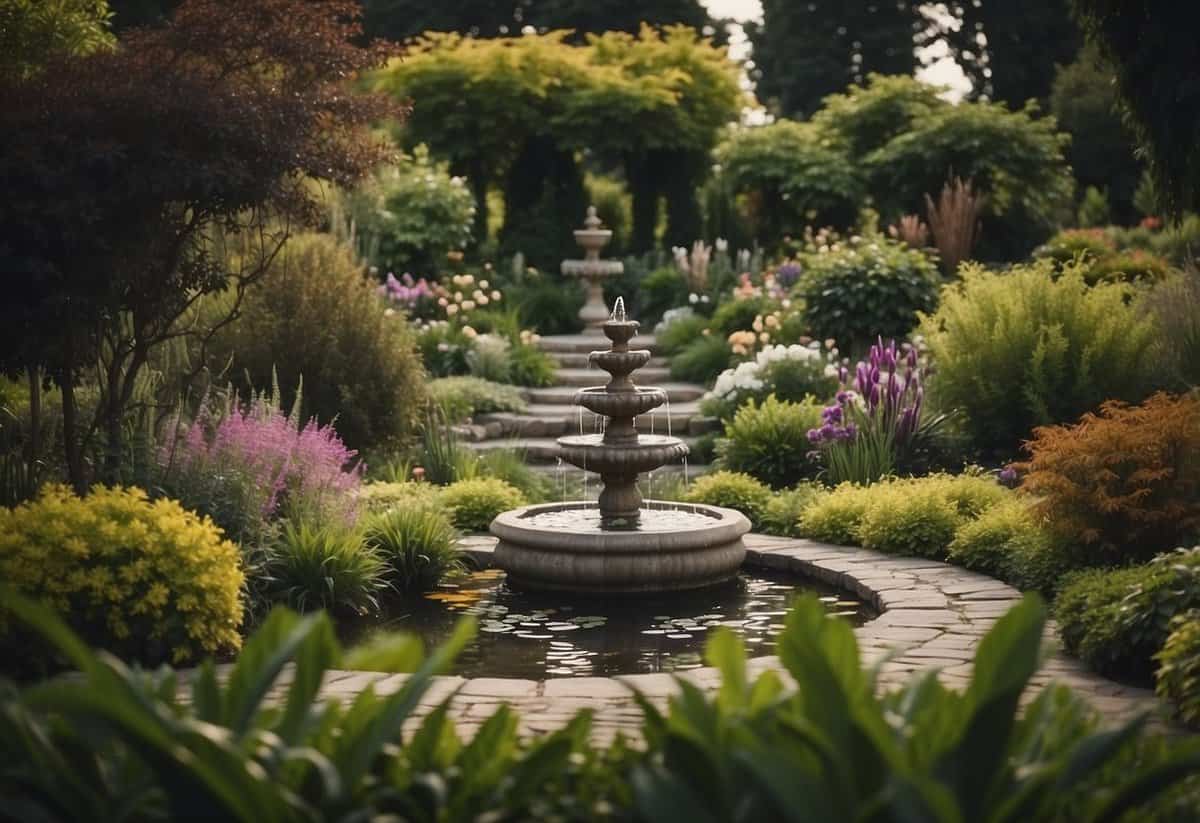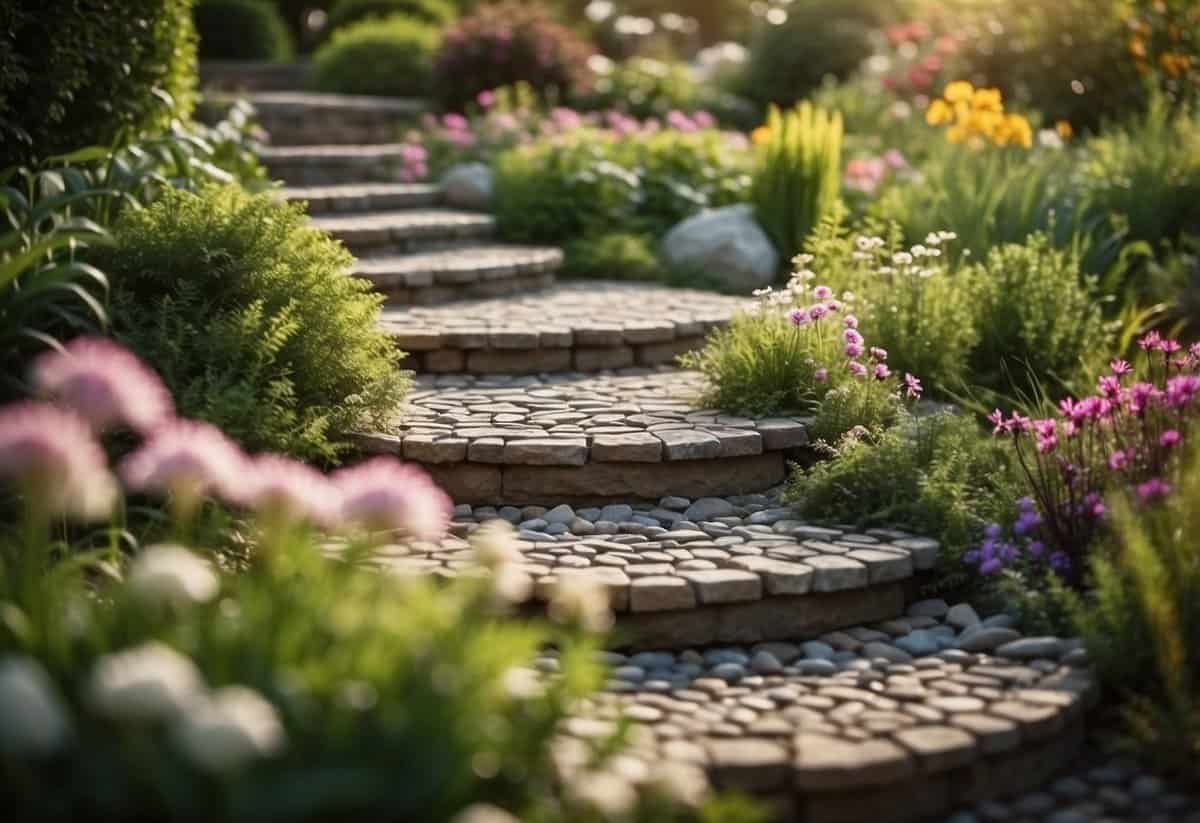Garden Ideas Instead of Decking: Creative Outdoor Alternatives
When planning your outdoor space, decking might be the default option that comes to mind. Yet, there’s a whole world of garden ideas that can bring even more character, practicality, and beauty to your yard.

Exploring alternatives to decking can transform your garden into a unique and inviting haven. From lush grassy areas to intricate stone pathways, you can create a space that truly reflects your style and meets your needs.
1) Stone Walkways

Stone walkways can be a perfect addition to your garden. They provide a natural and elegant look, guiding you through various parts of your yard.
You can use different types of stone, such as flagstone or stepping stones. Spaced-out stones can create a distinctive path that is both functional and attractive.
Enhance your walkway by adding small pebbles or ground cover plants around the stones. This helps integrate the walkway naturally into your garden landscape.
2) Raised Garden Beds

Raised garden beds can be a wonderful addition to your yard. They make planting and harvesting easier, especially if you have back problems.
You can build raised beds from various materials like wood, stones, or recycled items. A simple frame can be made from cedar fencing and braces, as shown in these DIY ideas.
Raised beds also help to keep your soil well-drained and prevent weeds. You can even add trellises to support plants like tomatoes and cucumbers for a decorative touch.
Experiment with different designs and enjoy your gardening space.
3) Pergolas

Pergolas can add a charming touch to your garden. They create a shaded area where you can relax and enjoy the outdoors.
You can use pergolas to divide different zones in your garden. This can help create a more organized and visually appealing space.
Consider adding climbing vines like bougainvillea or clematis to your pergola for a colorful and fragrant touch. They can enhance the structure and provide additional shade. For more pergola ideas, check out this resource.
4) Outdoor Fire Pits

An outdoor fire pit can transform your garden into a cozy gathering spot. You can choose from various materials like stone, brick, and concrete to match your garden’s style.
Plants such as native succulents and cacti varieties can create a natural barrier around the fire pit. This not only adds a touch of beauty but also blends well with the surrounding landscape.
For a more relaxed setting, consider adding a built-in banquette or even some simple wooden benches. This setup invites family and friends to gather around and enjoy warm evenings outdoors.
5) Gravel Pathways

Gravel pathways are a great alternative to decking. They need less maintenance and can bring a rustic charm to your garden.
You can also create interesting designs with gravel. Pair it with stepping stones for a clear path.
Gravel is perfect for winding paths through lush gardens. It gives your garden a natural, relaxed feel. For inspiration, you can check out some gravel garden ideas.
A gravel path can be affordable too, with options like pea gravel that fit any budget.
6) Living Walls

Living walls are a great way to add greenery without taking up much space. You can make a living wall using metal planters filled with soil mix. Drill drainage holes in the bottom, then fill them with a mix of potting soil and planting mix.
Regular watering and the right light will keep your living wall healthy. Make sure every plant gets enough water. Consider using materials like wooden pallets or wire mesh panels to create your vertical garden.
For more ideas on creating a stunning living wall, check out This Old House.
7) Potted Plant Displays

Potted plant displays are a great way to bring variety and color to your garden. They are versatile and can be easily moved around to change up your garden’s look.
Mix different plants in one pot for an eye-catching display. For example, you can use purple fountaingrass with coleus and impatiens.
Using plants like basil and rosemary can also be practical. Arrange them around a focal plant, such as flowering plumbago, to create a beautiful and useful garden feature.
8) Outdoor Rugs

Outdoor rugs can transform your garden space into a cozy and stylish area. They add warmth and character, creating an inviting atmosphere for gatherings.
Choose water-resistant and fade-resistant rugs for durability. Look for fun patterns like sunburst designs to make your space pop.
For a coastal vibe, go for blues and whites. This can create a relaxed, beachy feel in your garden. Find rugs from popular stores like West Elm and Target to match your style.
Using outdoor rugs is a simple way to bring comfort and design to your garden.
9) Water Features

Adding a water feature to your garden can create a relaxing atmosphere. A simple modern garden pool can add a sleek touch to your landscape. Consider lining your pool with evergreens and hostas for a serene look.
Another option is to install a larger pond with fish and plants. This can make your garden feel like a natural oasis.
If space is limited, a fountain can still bring the soothing sound of running water.
10) Garden Lighting

Garden lighting can add a magical touch to your outdoor space. Think about using globe-shaped lights, which provide a soft, even glow. These lights work well in gravel gardens or xeriscapes.
Solar lights are another great option. Not only are they energy-efficient, but they also can be decorative. Consider adding solar stakes along the borders of your garden to highlight pathways and plants when the sun goes down. Proper lighting can make your garden a welcoming place even after dark.
Benefits of Garden Alternatives to Decking

Switching to garden alternatives instead of traditional wood decking can benefit you in various ways, including helping the environment, saving money, and offering more design choices.
Environmental Advantages
Using garden alternatives like composite decking and concrete instead of wood decking helps reduce deforestation. Unlike wood, composite decking is made from recycled materials such as wood fibers and plastic, reducing waste.
Concrete options, like pattern-imprinted concrete, are durable and can last for many years without needing frequent replacement, minimizing resource usage.
Moreover, living alternatives such as ground cover plants or grass lawns contribute to biodiversity by providing habitats for insects and small animals. Rock gardens or self-binding gravel are also options that need minimal maintenance and don’t harm the environment.
Cost Efficiency
Choosing garden alternatives can save you money in the long run. Composite decking may have a higher initial cost, but its low maintenance means you won’t spend much on upkeep. Concrete patios are another cost-efficient choice due to their durability and low maintenance needs.
Self-binding gravel, for example, is cheaper to install and doesn’t need the regular care that wood decking does. This can save you money on things like staining, sealing, or fixing. Ground covers and grass are also affordable and can be easier on your budget compared to wood.
By picking cost-effective materials, you can allocate your budget to other gardening projects or decorations. This approach helps you get more value out of your investment.
Aesthetic Flexibility
Garden alternatives offer more design options than wood decking. For instance, poured concrete can be stamped or colored to resemble natural stone or tiles, giving you a variety of looks to choose from.
With composite decking, you can enjoy the appearance of wood without the drawbacks, and it comes in many colors and textures. Ground cover plants add a lush, green look, while gravel can create a rustic or modern feel, depending on the type you choose.
These materials allow you to customize your outdoor space exactly how you want it, whether aiming for a modern, rustic, or natural aesthetic. The flexibility in design helps match your garden’s overall theme or your personal style.
Ideas for Replacing Decking

If you’re looking to replace your old decking with something new, consider creating a garden pathway, building a patio, or installing a pergola. These options offer functional and aesthetic benefits for any garden space.
Creating a Garden Pathway
Garden pathways can transform the look and feel of your outdoor space. Stone or gravel paths can add a rustic touch, while brick or concrete paths provide a more polished look.
Make sure the path is wide enough for easy walking and consider adding border plants to enhance its charm. Regular maintenance like removing weeds and refreshing materials as needed will keep it looking great for years.
Building a Patio
A patio offers a versatile and durable replacement for decking. Materials like concrete, stone, and brick are popular choices due to their longevity and low maintenance. You can personalize your patio with outdoor furniture, planters, and decorative touches.
To extend its usability, consider adding a canopy or shade sail for protection from the sun. Lighting options like string lights or lanterns can also make your patio a cozy spot even after dark.
Installing a Pergola
Installing a pergola can create a beautiful, shaded area in your garden. Pergolas can be made from wood, vinyl, or metal and can be customized in size and style. They can support climbing plants like wisteria or roses, adding natural beauty.
For extra comfort, you can add outdoor curtains or shade cloths. Also, think about adding seating or a dining area underneath to fully utilize the space. Regular maintenance, like treating the wood or checking for rust, will help keep your pergola in great shape.







